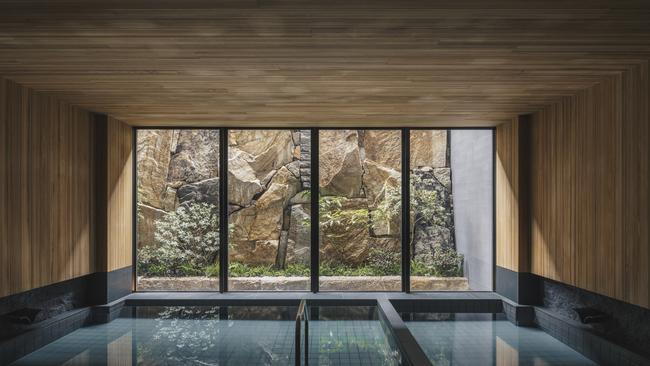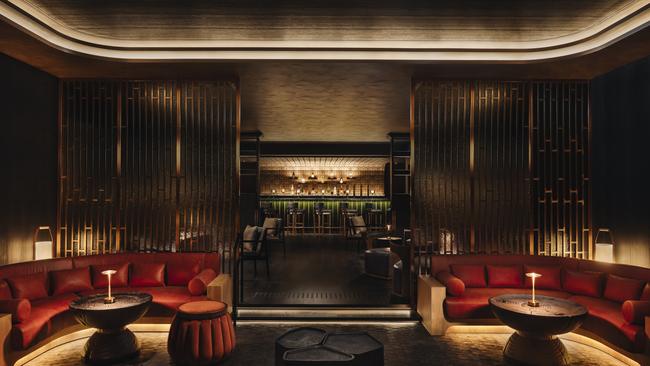Hotel review: Six Senses Kyoto
This is the first Six Senses in Japan and the design-focused luxury property has an almost ceremonial level of courtesy. Here is why we give it full marks.

The very best hotels are always the sum of many parts. It’s not just about big statements and grand flourishes, but how guests are treated, made to feel at home, cared for and considered. Lots of accommodation brands get it right but some do so with more detail, determination and (even) daring than others. Management across sibling properties may toe the corporate line but there can be inconsistencies and even renegade factors, too. And then there are a few, such as the newly launched Six Senses Kyoto, where everything meshes in such seamless and effortless style that it’s hard to imagine it’s ever been on training wheels.

I am booked in with my daughter-in-law and a five-year-old granddaughter who’s quite the junior jetsetter. We all have the same family name and two of us share first initials. The adults rove between languages, confuse everyone regarding who’s who and yet the staff, some still learning as they go, cope with this scenario as if it were an ordinary occurrence.
So what are those six senses heralded by the brand? To the primary trio of sight, sound and touch, a second level includes taste and smell.

But the sixth is intuition, which is always harder to classify, but glaringly obvious when it’s missing. It’s those unseen and unexpected touches that most impress and, in this case, the almost ceremonial level of courtesy at this mid-sized 81-key hotel is unfailing, from the lounge-seated check-in process (herbal tea, black sugar sweets, a purifying halo of incense) in the pale autumnal-toned reception lobby to the boxed treats that arrive unsummoned in guestrooms. How to choose which morsels to sample, all artfully arranged in a wooden box of tiny compartments? Should there be a designated progression? Who would know?
Is finger-licking allowed? We just hoe in and scoff the lot. Matcha cookies, mochi energy snacks, sesame cakes, cacao balls, miso walnuts … and then we notice the shelf arrayed with glass jars of lemon cookies, soya crackers and sweet potato crisps.

Opened in April, this is the first Six Senses entry into Japan for IHG, the conglomerate that also includes the top-tier Regent, InterContinental and Kimpton siblings. It’s a design-focused brand with generous dollops of wit and whimsy but not the edgy, declaring style of many boutique contenders. Kyoto is not short of luxe hideaways, but the Japanese cultural capital is booming, and five-star digs are in demand.
For starters, there’s Aman Kyoto, set in forested foothills, plus Ritz Carlton beside the Kamogawa River, and Four Seasons, a veritable oasis of greenery and ancient pond gardens. The low-slung Six Senses has a more urban setting at Higashiyama in the city’s east, within easy access of Kyoto Station and key sightseeing drawcards. Grab one of the hotel’s complimentary Coco Mat e-bikes and cycle off on neighbourhood expeditions or simply walk around the corner to the extraordinary Sanjusangendo Buddhist temple and its phalanx of golden statues. Shrines and teahouses abound in this quarter, plus specialty shops and ateliers selling the kind of ineffable paraphernalia at which Japan excels. A bamboo tea whisk, a tiny coin purse made from vintage kimono fabric or an oil paper umbrella, anyone?

The Six Senses estate is not expansive, and its grounds merge, via a compost garden and herb and veg patch, where Fushimi chillies and Kujo green onions are flourishing, with the 16th-century Toyokuni Jinja shrine complex. So while there are ample strolling possibilities, the architects have wisely focused on inner spaces to create flow and context.
A beguiling internal courtyard, based on a typical Japanese garden template, is home to maple trees, meandering stone pathways, water smoothing a course over artfully placed rocks, glimmering green ferns of almost artificial perfection, and shaded alcoves set for lounging, drinks and dining.
Guestrooms in garden-view categories on the levels above overlook this serene compound, while others face the textured rooftops of buildings and hills beyond. All are sanctuaries of pale timbers, washi fibre paper surfaces, and exceptionally comfy beds.
Two premier garden king suites on the ground floor at the building’s rear have private semi-paved gardens with terrace seating and postcard-worthy aspects of stone lanterns and seasonal plantings. It’s a panorama that can be viewed from couch, bed or bathtub and better than any TV screensaver, although my granddaughter and I eventually do locate a wall-mounted set, discreetly disguised behind a sliding white-on-white moon-motif mural.

So even amid the tourist traffic and buzz of Kyoto, there is a sanctuary-like atmosphere, which fits the much-vaunted description of urban resort, in no small part due to its spa and wellness focus. Swim in the long, generously warmed indoor pool, soak at the gender-segregated bath house facility, float in the watsu hydrotherapy tub, check the sauna and steam room, have a healing massage or a wellness consultation that involves diagnostic health screening, various tests and hook-ups to machines and the slight indignity, in my case, of being weighed just after the first three matcha pancakes of the morning. Pearl-infused skin masks? Vibrational tuning forks? Tibetan sound healing? All yours, with bells and gongs.
A considered walk around the hotel facilities is an excursion in itself, thanks to the playful interiors created by Singapore’s BLINK Design Group.

The Heian period (794-1185), heralded as the golden age of culture, art, literature and aesthetic refinement when Kyoto replaced Nara as the imperial capital, is the core inspiration for art and motifs. But it’s a pared-back approach here, full of wit and whimsy. The notion of ancient imperial scroll and screen hangings is upended in favour of funky handcrafted tile installations and interpretations of frolicking animals that hark to the first manga comics; the folktale character motif of a fox by each guestroom door lights up when the do not disturb switch is activated. Kyoto’s renowned indigo-and-white shibori-dyed fabrics are prominent, too, across cushions and bolsters.

Sustainability factors are present and very correct, from the Earth Lab, where guests can participate in a range of activities that includes making beeswax wraps, to the Alchemy Bar, where beauty products such as body scrubs can be whipped up with ingredients plucked from the garden. Is there anything green tea cannot be used for? There’s a vigorous recycling program, kitchen waste is composted, and culinary ingredients come sourced from regenerative farms, fisheries and producers within a narrow radius.
The one restaurant, Sekki, is a big and airy all-day surprise package of a la carte and buffet options, with an open kitchen and connected communal-style cafe well stocked with kombucha, cakes, light courses, juice and teas.

The 24 micro-seasons of the ancient Japanese calendar, based on solar and lunar movements and nature’s characteristics, are honoured at Sekki, so apposite ingredients and hyper-freshness are guaranteed, even if the two buffet stands at breakfast are well apart and slightly bewildering in their set-up. But such dissonance is forgiven when matcha granola makes an appearance and shiso hummus is duly uncovered. Hot dishes are plentiful, with sea and land ingredients well represented, vegetarian options galore, and fiery herbal vinegars cheerily referred to as rocket fuel.

A tiny omakase sushi bar, an offshoot of an acclaimed Osaka original, is an unexpected bonus, but premium tuna served on antique dishes and the venue’s petite size keep prices sky-high. The granddaughter hangs out very happily a few hours each day at the indoor-outdoor GROW kids’ club (ages 5-12) while her mum and I notice most parents head quite early (“at cocktail o’clock” is the accepted parlance, apparently) to Nine Tails Bar, a speakeasy-style den that could be in the backstreets of a fashionable NYC borough were it not for those recurring “foxy” falderals.
Lights are low, the tiled bar glows as green as Midori liqueur, and sultry mixes feature the likes of yuzu, lychee, house-made syrups and sansho pepper. It’s convivial, of the moment and unerringly on point. A microcosm, in fact, of this new and exceptional hotel, already the recipient of a Michelin key in the inaugural Michelin Guide to Japan, which recognises destination hotels that offer “enhanced local experiences and unique character”. Full marks.
In the know
Six Senses Kyoto’s 81 guestrooms and suites range from 42sq m to 238sq m across a selection of categories, including a three-bedroom penthouse suite and connecting rooms. Seasonal rates apply; average northern summer tariff from about $1722 a night for a superior king room, midweek, plus service charge and city tax. A percentage of hotel revenue supports local projects.
Susan Kurosawa was a guest of Six Senses Kyoto.
If you love to travel, sign up to our free weekly Travel + Luxury newsletter here.



